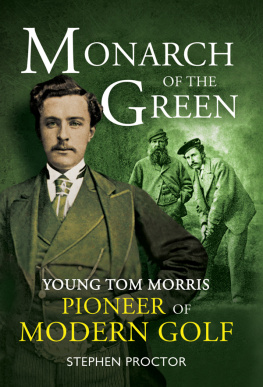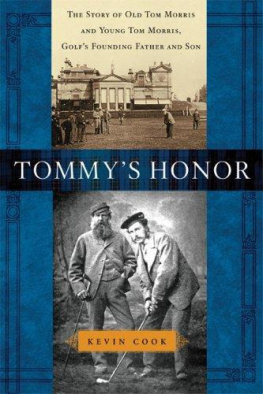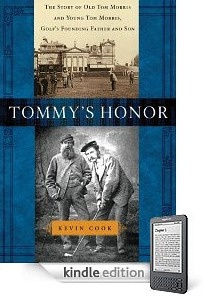Contents
Guide

First published in 2019 by
ARENA SPORT
An imprint of Birlinn Limited
West Newington House
10 Newington Road
Edinburgh
EH9 1QS
www.arenasportbooks.co.uk
Text copyright Stephen Proctor, 2019
ISBN: 978-1-909715-75-2
eBook ISBN: 978-1-78885-166-4
The right of Stephen Proctor to be identified as the author of this work has been asserted by him in accordance with the Copyright, Designs and Patents Act 1988.
All rights reserved. No part of this publication may be reproduced, stored or transmitted in any form, or by any means electronic, mechanical, photocopying, recording or otherwise, without the express written permission of the publisher.
Every effort has been made to trace copyright holders and obtain their permission for the use of copyright material. The publisher apologises for any errors or omissions and would be grateful if notified of any corrections that should be incorporated in future reprints or editions of this book.
British Library Cataloguing-in-Publication Data
A catalogue record for this book is available on request from the British Library.
Designed and typeset by Polaris Publishing, Edinburgh
Printed by TJ International Ltd, Padstow
C ONTENT S
One
HEROS WELCOME

A s the ten oclock train chugged into St Andrews, Young Tom Morriss admirers hustled out to Station Road beside the golf links to welcome their champion home. It was Saturday night, 17 September 1870. By then everyone had heard the news. Young Tom had done it. For the third year in succession hed won the Champions Belt, the trophy every one of Scotlands leading golfers dreamed of fastening around his waist. Now it was Tommys to keep.
Since Thursday, when news of his feat had filtered into town, the Scottish flag had flown over his fathers golf shop heralding the victory. But it wasnt the win alone that brought Tommys faithful out that night. It was the way he had played. Tommy had annihilated all records for the Open Championship, coming in with a score so low it would stand for the ages.
He was 19 years old.
Even at that age, Young Tom Morris was the defining player of his era. He stood five feet eight inches tall, with reddish-brown hair like his fathers and a wisp of a moustache. He was thin and wiry but capable of surprising strength, more likely than most to snap his wooden shaft in half with a ferocious swing. He dressed like a dandy, favouring tailored suits, silk ties and pocket watches, and he played the game with a reckless abandon that dazzled those who saw him compete.
I shall never forget and no one can his dash and style, recalled the Reverend William Weir Tulloch, his fathers first biographer. His grand swipes, the Glengarry bonnet flying off his head every time he took a full drive.
Young Tom was accompanied on the train from Prestwick, birthplace of the Open Championship, by his father, Old Tom, his best friend and competitor David Strath, and fellow golfer Bob Kirk. The four of them had made it a clean sweep for St Andrews men, with Davie and Bob tied for second and Old Tom in fourth. Not a single player from Musselburgh, St Andrews chief rival in golf, had finished in the top rank, making victory all the sweeter.
Tommy had barely stepped off the train when his worshippers, much to the champions delight, swept him up onto their shoulders and, with deafening cheers that roused the sleepy town, carried him all the way up the links to Mr Leslies Golf Inn. Inside they were greeted by a crowd of well-wishers that included every star in the golfing firmament of St Andrews.
The first to speak was James Glover Denham, a close friend of the Morris family. Denham had been injured in a railway accident and couldnt play golf any more. But he was a devoted fan of the game known for the copious statistics he kept on leading players of the day. He proposed a toast to Tommys health. Young Tom, he said, had performed a feat that in all probability would never be repeated. He had brought St Andrews the highest honour a golfer could confer on the town and raised the profile of Scotlands national game.
Then Tommy himself raised a glass. He thanked the crowd for its warm demonstration of affection and told them something no one in that room could have known, except perhaps Old Tom and Davie. Two years ago, when he was just 17, Tommy had made up his mind that it was his destiny to own the Belt. He would be the golfer who ended the decade-long quest for that red-leather trophy, with its gleaming silver buckle. He would be the one who earned the right to wear the Belt for all time by winning three consecutive Open Championships. Tonight, Tommy said, he relished the satisfaction of a dream realised.
His father spoke next. Old Tom had won the Open in consecutive years himself, losing narrowly in his attempt to claim the Belt with a third victory. It was his pleasure, he told the crowd, to see that coveted trophy worn by his greatest rival on the links, his own son.
Henry Farnie, who covered the Open for the Fifeshire Journal, must have sensed a passing of the torch from Old Tom and the great players of his day to Scotlands new Champion Golfer. Old Tom was nearly 50 now. With his thick grey beard and ever-present pipe in hand, he was well on his way to becoming the most revered figure in the game. Farnie raised his glass to offer a toast of his own. To Old Tom Morris, he said.
The revelry went on into the night, as everyone in Mr Leslies savoured the opportunity to witness history and, perhaps, took a turn trying on the Belt. They knew that golf had never witnessed a feat to match what Young Tom had accomplished two days ago on the links of Prestwick.
But they could not have known that by winning the Belt he was forging a new future for the royal and ancient game. Ever after golf would be driven by the feats of superstars like Tommy, coming along once in a generation, lifting the game onto their shoulders and carrying it to new heights.
Emboldened by his victories, Tommy set in motion changes that in decades to come would elevate the men who earned their living at golf, from disreputable caddies not welcome in any gentlemens clubhouse to men of stature with wealth of their own.
Tommys emergence would prove to be the pivotal moment in golfs evolution from a Scottish pastime to a spectator sport, ushering in a period of phenomenal growth that saw the game spread to England, America and around the globe.
So lasting was Tommys impact that a generation later, during the 1896 Open at Muirfield, his memory was invoked by those who had come to see the games next prodigy, Englishman Harry Vardon, who would win the first of his record six Open Championships that year.
The question, inevitably, was who was the greater golfer. William Doleman, a baker from Glasgow, spoke from the perspective of a man who had competed in every one of Tommys Opens. His assessment was unequivocal.
I tell you, sir, he said in response to a question from a friend. There isnt a man, English or Scotch, in all this field that impresses me with the same sense of power, or golfing genius call it what you like as Tommy did the instant he addressed the ball.
Sadly, those who toasted Tommy into the night at Mr Leslies also could not have known that all of his glorious achievements, before and after the Belt, would be eclipsed by personal tragedy. Or that it would be James Denham, the very man who raised the first glass to the champion, who made certain the young golfers fame was etched in stone forever at the most sacred place in St Andrews, the cathedrals burying ground.















